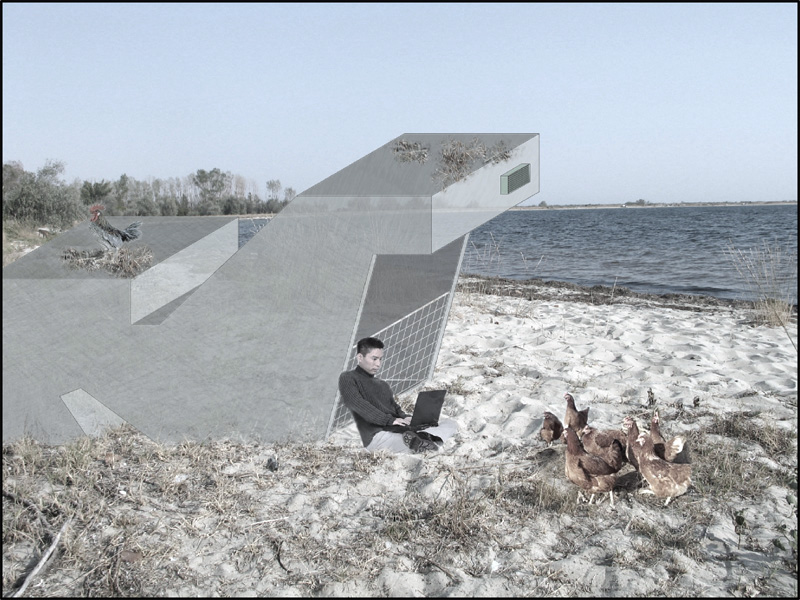

Ec[h]o is a community of temporary housing and research. The community, by cultivating and studying plants, is producing research in the fields of health, food, and energy, with the common denominator sustainability and autonomy. The community's inhabitants are all staying in ec[h]o temporarily, from a few hours as summer vacationists to a few months as researchers.
Ec[h]o was designed over the old facilities network of a camping of the GTO (Greek Tourist Organization) that was located beforehand at the site, at Epanomi, Thessaloniki. The design was based on a global idea: that of discovery, emergence and reuse of the already existing networks, as an “artifact” of a former housing situation.
The ec[h]o new housing is realized through a series of different modules that can be plugged-in in the various network sockets. The user, depending on the way she chooses to work, dwell or socialize, chooses the number, variety and placement of her modules. These modules can be hauled inside and outside of the site. On the site all spaces are isotropic and equivalent, although centers of congestion can be created through the choice of placement the users make. These centers are of course temporary and depend on the whim and choice of the users.
Supervisors: Tzirtzilakis Yorgos, Paniyiris Costis
Reference Number: 235


"Sustainable architecture" is the practice of designing, constructing and maintaining buildings in a way that their environmental impact is minimized. One of the most important aspects of sustainable design is energy efficiency - a drive to reduce the amount of energy a building consumes over its life-span. According to Royal Australian Institute, to not make the most efficient use of energy in any form of building is an unethical architectural practice.
All though the above statement is pretty self explanatory, as well as very well spread and accepted in its basis globally, keeps on challenging contemporary architects in many different ways, mainly because it stresses out loudly architecture’s responsibilities on global environmental degradation and energy deficiencies.
The international community dealing since late seventies with the exhaustion of the natural recourses is been saturated by endless financial analysis and specific experts discussions while most of the time the main corresponding issue is been left out of them. Human habitation should be again in the center of the relevant discussion in order to pose the question the right way and acquire efficient answers. Sustainable solutions on our planet’s energy and environmental problems then can be expected to emerge.
F2E2( Form Follows Energy Efficiency) is a study which aims to be a leading project for housing in warm climate conditions. Project’s objective is to enter the theoretical and practical discourse of design energy efficient sustainable houses while maintain efficient in all architectural perspectives.
The case of study and subject for discussion is a three house cluster in Kritharia Magnisias near by city of Volos in Greece.
Supervisors: Tsangrassoulis Aris, Philippitzis Dimitris
Reference Number: 215


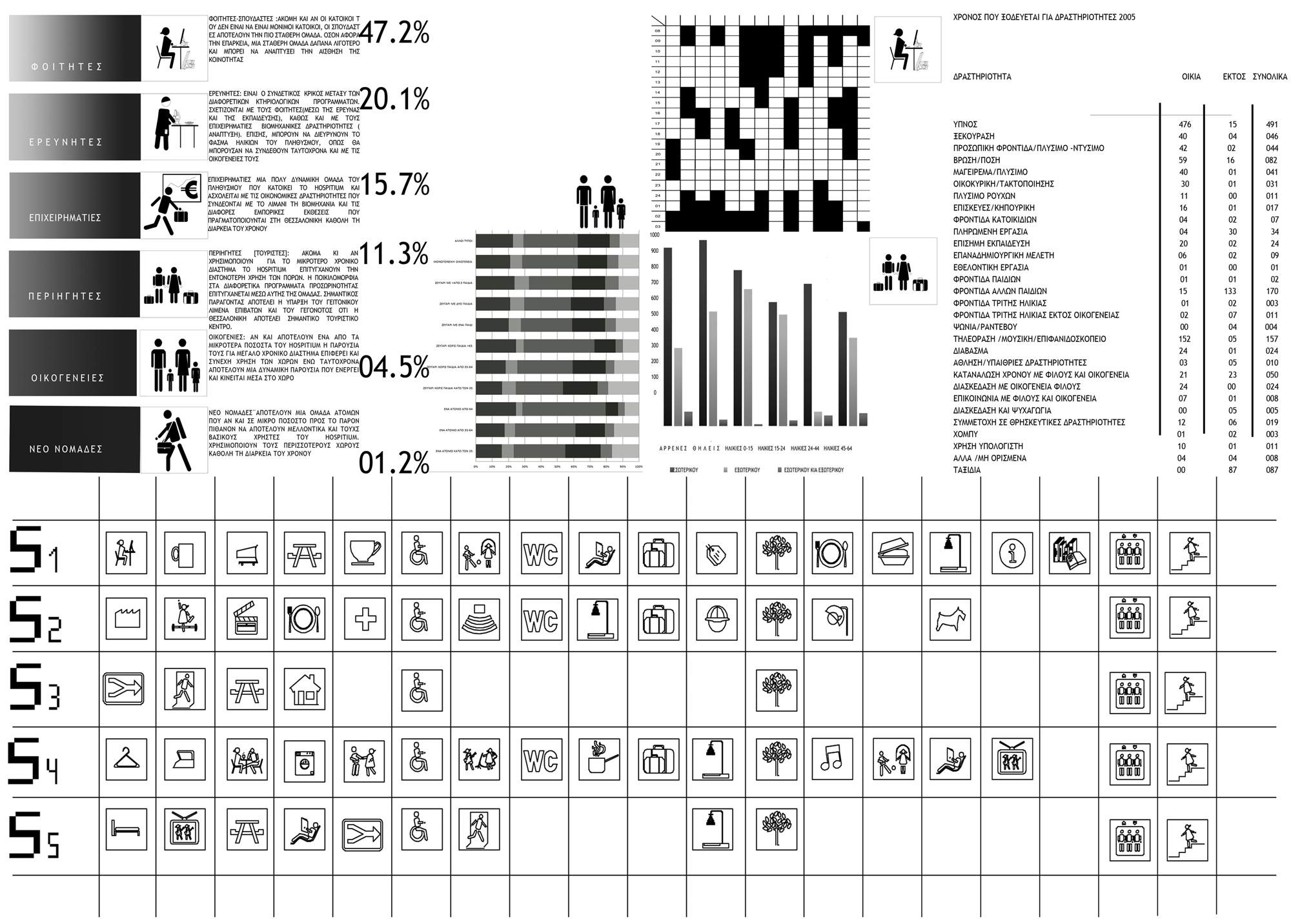

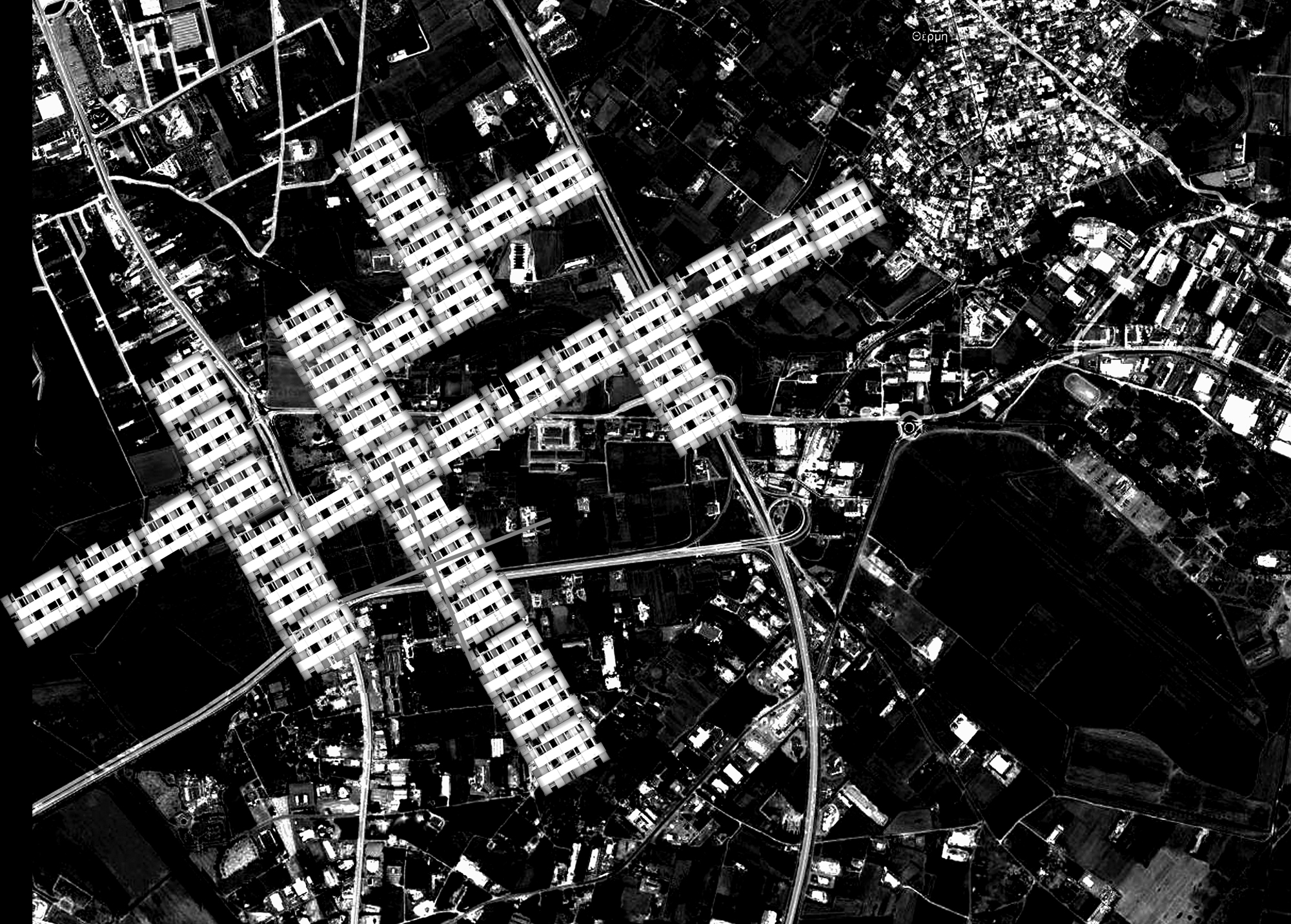

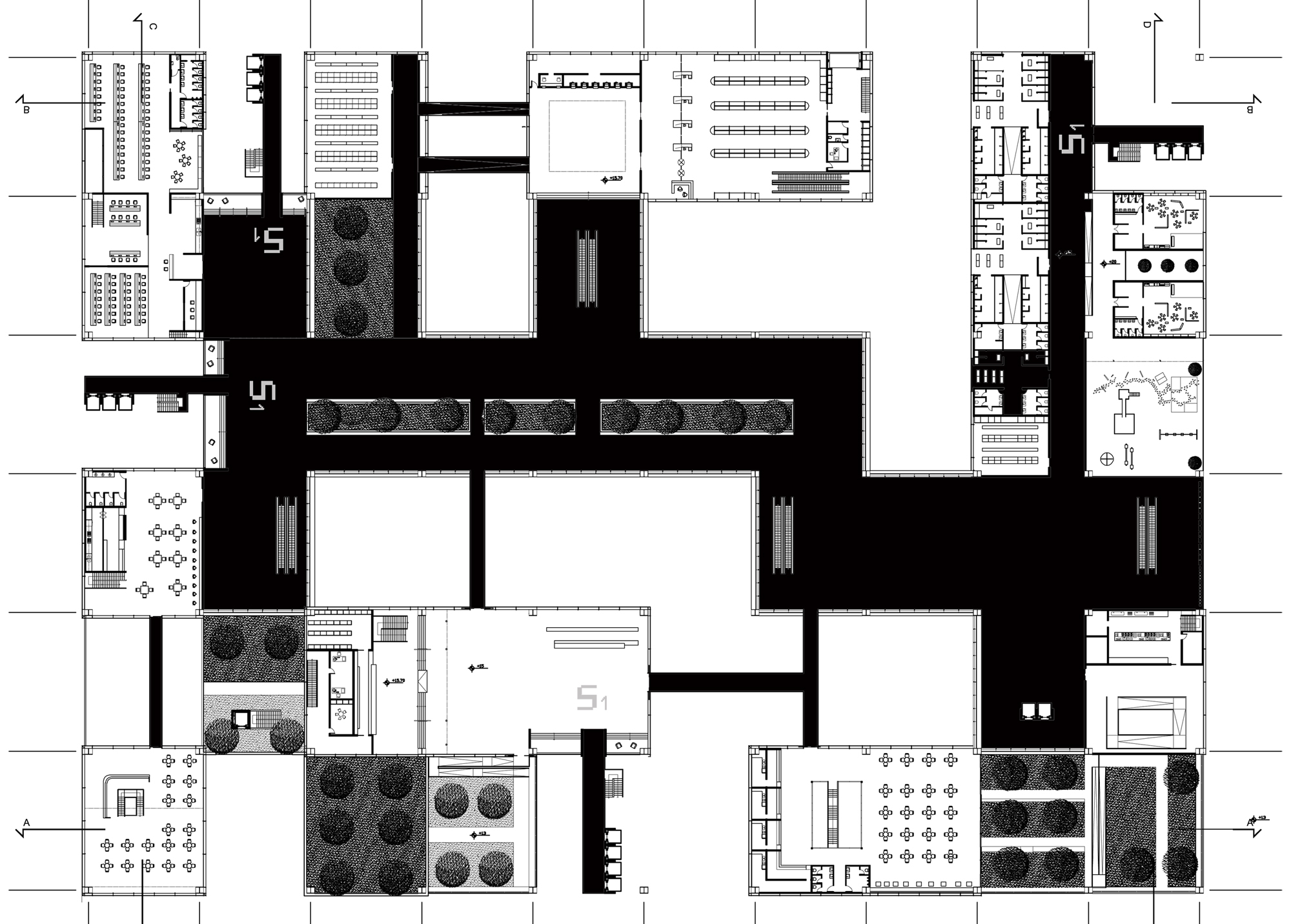

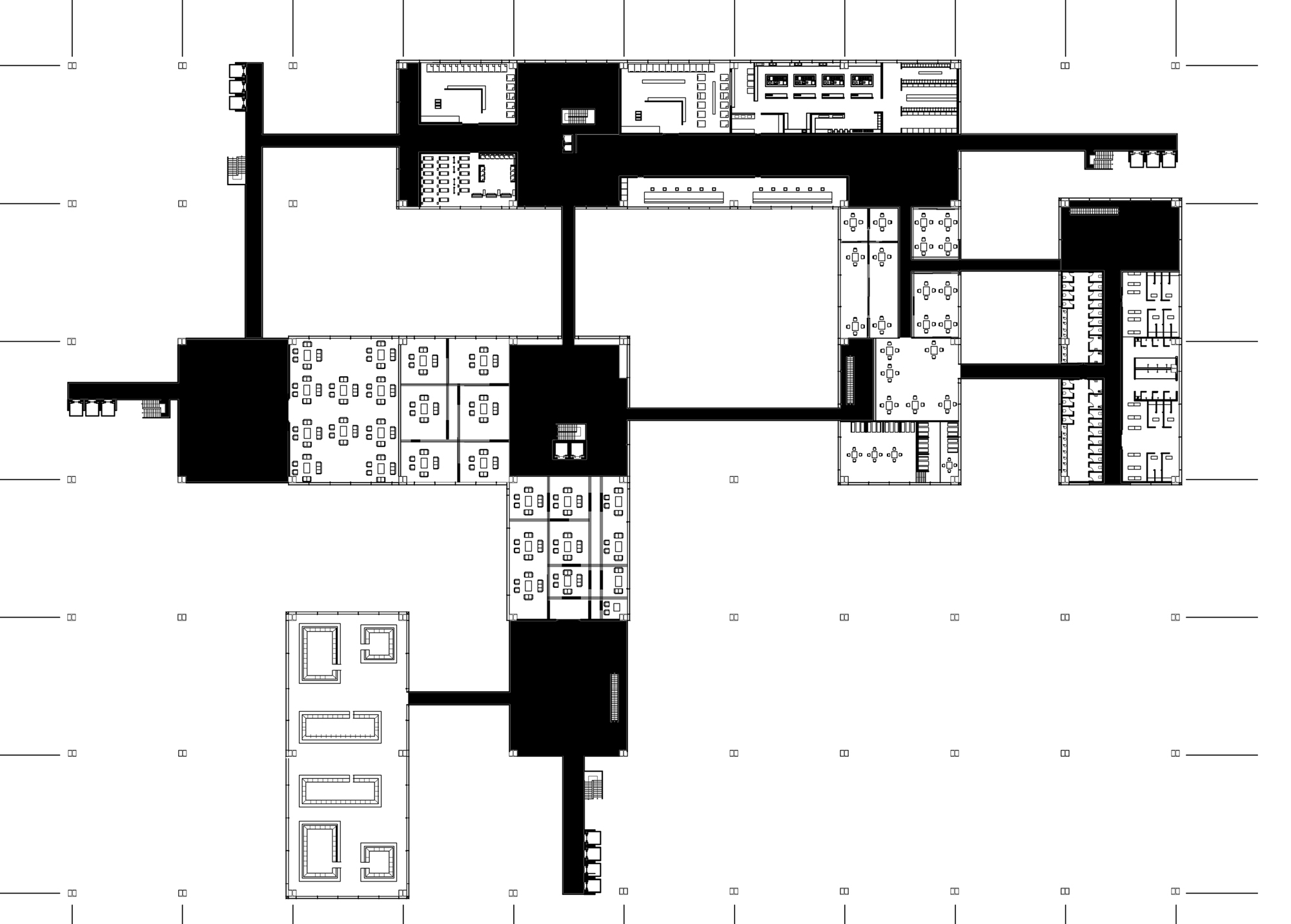

"Hospitium" as a suggestion consists the drawing product application of a spatial model whose background and theoretical references are in the structure and convention of the modern cities as discussed above. Better than defining it as a building is to define it as a total habitation of multiple activities and uses whose structure is based in a system. That system has not a specific and final form but constitutes a continuously changeable spatial system and a sum of heterogeneous and discontinuous rooms that is specified by the simultaneous relations of actions, events and experiences to many levels emphasizing and giving practical importance to concepts such as multifunctional and mixing of uses and identities.
Key for the perusal of «Hospitium» is the flexibility. The forms are incomplete, open, non hierarchical, with his inside being integrated or confused with the outside, disassembling the interior with the exterior limits. The form that is created every time will be a result of composition and articulation of factors, facts and conditions that will be supplied by the same social forms with the ability of not being confined and to translate the data inside flexible programmes which are not confined to former logics but on the contrary they set them aside even if finally they end into a total negation of the walled environment. The ability itself of the system allows the sudden changes of the level.
Supervisor: Tzirtzilakis Yorgos
Reference Number: 202
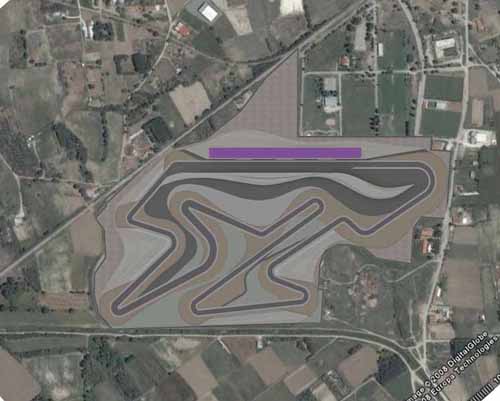

Motogp is the premier championship of motorcycle road racing. Grand prix motorcycles are purpose-built racing machines that are neither available for general purchase. MotoGP championship, has a season of 18 Grands Prix in 14 countries (Spain, Italy, Germany, France, Portugal, England, Czech republic, Japan, Qatar, Australia, U.S.A.. Netherlands) bringing together the world’s top motorcycle manufacturers such as Honda, Yamaha, Suzuki, Ducati, Kawasaki, Aprilia and KTM - plus an elite crop of riders from every corner of the globe.Its race of the championship takes place in circuits verified by the F.I.M (Federation International Motocyclism).
In Greece the biggest circuit is located in Serres. After studying the circuit was realised it doesn’t complete none from the required specifications and was decided a redesigning.
The required length was accomplished in the new tarmac design, the form of which resulted from the study of the pose of the riders body during a straight. In the exterior side of turns were shaped special spaces for the protection of the riders [gravels]. As elements of their fulfillment were placed the grandstands. Their form was attempted to constitute a mild gesture in the area. They are constituted by concrete slices shaping hills with squares in their back part and the seats of the spectators front. The central grand stand is placed in parallel the straight line of the start . The entries of visitors are found in her northern side and are shaped as folds. The visitor will be supposed to enter in the interior of the grandstand to cross it in order to come out front in the spectators seats.
The buildings installations adopt a similar way of resolution. They have been created 36 pit box while in first floor is a building unit with glass aspects, so that is not prevented the view of entire circuit, which entertains 30 booths as well as offices for timekeeping, race results and race marshal. A slice of ground rise up in order to accommodates pits and is continued in the main building in the ground floor of which are found three buildings units. The medical centre that accommodates resurrection areas and minor injuries rooms, and also antidopping control, teams’ offices of and the officials’ offices. In the building of the teams offices exists a glass exterior aspect but also one second internal shaping a internal circumferential corridor and core in the interior the offices. The officials’ offices have similar glass aspect but a corridor in the northern side that serves them.
In the second floor is found the press centre that allocates also this circumferential corridor but also one that connects its two sides. Allocates spaces for the teams briefing, press conference, space for the photographers of 50 seats, working area for the journalists with 200 seats and special space for photocopiers. In the same level it is also found café-restaurant. It is a united space that offers free view over the circuit. The second floor is an exclusive V.I.P area. Allocates space for café-restaurant but also suites with view over the circuit and exclusive balconies in the southern side and with view the start/finish line in the north side.
Supervisor: Gavrilou Evelyn
Reference Number: 203


The issue of diplomatic work concerns the modulation of the front of the coastline, from the church of Life Giving Fountain to Heracles cement (AG ET), called Plakes. The area is located right of the coastal road that goes to the West Pelion, shortly after the limits of the city of Volos. This residual piece of land was created by the road that has been opened along, giving few possibilities of operation, which occurs in many coastal areas of Greece. Of particular interest is the fact that, as one crosses the area, meets some micro scenes, other artificial and other natural, which is fully integrated into the overall picture of the landscape.
The aim is to develop the coastal zone retaining the character of the area. Kept and used most of the existing little structures and where necessary extend or designed new ones. This is done so as not to upset the natural landscape and to maintain harmony. The aim is not to transform the region into a tourist resort but to provide greater comfort to the stay of visitors.
Supervisors: Philippitzis Dimitris, Gavrilou Evelyn
Reference Number: 238
This project deals with the redesigning of the sea front of the city of Thessalonica, from the Music Hall (Megaro Mousikis) until the Nautical Club of Thessalonica, aiming to redefine and restore the connection between the sea and urban landscape.
The study area includes the Music Hall, the Conference Hall, the Posidonio Athletic Center, the Nautical Club of Thessalonica, separate recreation areas and unformed areas to be used as parking spaces. It also abuts on the Allatini Flourmill complex, which constitutes a preservable historical monument.
The engineering reformation of this area is necessary in order to settle the incompatibilities in use in it, to annul the deficiencies, and to upgrade it, in order to be integrated smoothly to the surrounding urban area. The suggested land uses are according to the General Urban Planning of Thessalonica, and include sport facilities, recreation and entertainment areas, as well as planted areas. The suggestion aims at the creation of a park-square where uses will be harmonically integrated. The study area is divided in thematic zone with clearly defined boundaries. The first zone includes the Music Hall, its Conference Center, the Music Garden, and the land area situated in front of them. This area belongs solely to the aforementioned buildings and will function as their garden. The General Urban Planning of Thessalonica makes provisions for the establishing of sports facilities bear the Music Hall. However, the placing of cultural and sports facilities is judged incompatible. For the smooth transition of one use to the next, a second zone is suggested, to solely house areas for recreation and entertainment. Their clear distinction is expressed territorially with the interjection of an independent islet. The third zone includes mainly sports facilities and related infrastructure, and secondary recreation and entertainment areas. Finally, the fourth zone is given to the housing blocks that abut on the study area to the east, and is to be used as their wider yard. In order for the aforementioned thematic zones to be linked, a continuous linear course is suggested – a promenade crossing them, offering a smooth transition from one to the other. The planned cycle lane, crossing the entire area, also functions as an integrator, providing visitors with a tour route. The cycle lane is also the only element of this interference, linking the New Beach of Thessalonica with the study area. Hard wooden floors, grassy areas, organized wooded green areas; gardens and flowerbeds, ponds and pools form the landscape of the study area. The boundaries of the interference are defined so as to secure a smooth transition from the urban to the sea front of the city.
The various alternative uses of the proposed planning are able to constitute the study area a cultural landmark, equal to the center of the town (archaeological and Byzantine museum, White Tower, Kipos Theater), as well as with the Port, where the Movie Festival takes places during the past years. Thus, the sea square triangle closes, giving a semantic coherence to the town, and the study area becomes a living organism.
Supervisor: Triantafillidis Giorgos
Reference Number: 231


The reconstruction of the area "Allatini" was an issue to be addressed in its entirety, as if the space is a whole on its own,which must evolve to adapt to the times and the needs around him. So we created a single landscape as an extension, and at the same time ending of the new coast, seeking to show off the connection of the city with the sea.
We moved the building volume of “Poseidoneio” to the coastline, in an effort to create counterweight to existing buildings, with a design that converses with the aquatic landscape. The place untilAlexander Avenue, acts as a filter to the urban landscape and is addressed solely to pedestrians, with paths linking the new coast with Kalamaria.
The whole design is based on the conversation between liquid and solid components, with materials that highlight this connection.
Finally, we gave to the limits of the sea and the road a new personality, allowing the area to unite with the sea with substantial manner, and discharged from the building blocks of the urban landscape.
Supervisor: Triantafillidis Giorgos
Reference Number: 247

